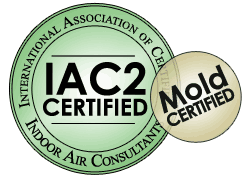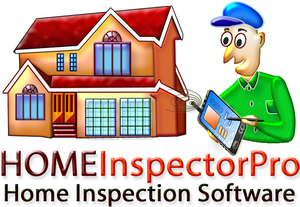Pyramid Home Inspections Call 951-536-1058 for a free price quote!

Pyramid Home Inspections
David Nasser 951-536-1058
Moreno Valley, CA 92553
Remedies to Indoor Air Quality Problems
Living Areas
Paneling, pressed-wood furniture and cabinetry. These products may release formaldehyde gas. Remedy: Ask about formaldehyde content before buying furniture or cabinets. Some types of pressed-wood products, such as those with phenol resin, emit less formaldehyde. Also, products coated with polyurethane or laminates may reduce formaldehyde emissions. After installation, open windows. Maintain moderate temperature and humidity.
Carpet. Biological pollutants can grow on water-damaged carpet. New carpet can release organic gases. Remedy: Promptly clean and dry water-damaged carpet, or remove it altogether. If adhesives are needed, ask for low-emitting ones. During installation, open doors and windows, and use window fans or room air conditioners. Vacuum regularly. Consider area rugs instead of wall-to-wall carpet. Rugs are easier to remove and clean, and the floor underneath also can be cleaned.
Floor tiles. Some contain asbestos. Remedy: Periodically inspect for damage or deterioration. Do not cut, rip, sand or remove any asbestos-containing materials. If you plan to make changes that might disturb the asbestos, or if materials are more than slightly damaged, contact a professional for repair or removal. Call your local or state health department or the Environmental Protection Agency.
Moisture. Moisture encourages biological pollutants, including allergens such as mold, mildew, dust mites and cockroaches. Remedy: If possible, eliminate moisture sources. Install and use exhaust fans. Use a dehumidifier if necessary. Remove molds and mildew by cleaning with a solution of chlorine bleach (1 cup bleach to 1 gallon water). Maintain good fresh air with natural and mechanical air circulation.
Fireplace. Your fireplace can be a source of carbon monoxide and combustion pollutants. Remedy: Open the flue when using the fireplace. Have the flue and chimney inspected annually for exhaust backdrafting, flue obstructions or cracks, excess creosote or other damage. Install smoke and carbon monoxide detectors.
Air conditioner. This can be a source of biological allergens. Remedy: If there is a water tray, empty and clean it often. Follow all service and maintenance procedures, including changing the filter.
Gas or kerosene space heater. These devices can release carbon monoxide and combustion pollutants. Remedy: Never use unvented kerosene or gas space heaters. In the room where the heater is located, provide fresh air by opening a door to the rest of the house, turning on an exhaust fan and slightly opening a window.
Tobacco smoke. Smoke contains harmful combustion and particulate pollutants, including carbon monoxide and combustion byproducts. Remedy: Do not smoke in your home or permit others to do so, especially near children. If smoking cannot be avoided indoors, open windows or use exhaust fans.
Draperies. New draperies may be treated with a formaldehyde-based finish and emit odors for a short time. Remedy: Before hanging, air draperies to ventilate odors. After hanging, ventilate the area. Maintain moderate temperature and humidity.
Lead-based paint. Paint manufactured before l978 may contain lead. Remedy: Leave lead-based paint undisturbed if it is in good condition. Before removing paint, test for lead. Do-it-yourself lead test kits are available from hardware or building supply stores. Do not sand, burn off or remove lead-based paint yourself. Hire a person with special training to correct lead-based paint problems. For more information, call 1-800-LEAD-FYI.
Animals. Many animals leave allergens, such as dander, hair, feathers or skin, in the air. Remedy: Keep pets outdoors as often as possible. Clean the entire house regularly. Deep clean areas where pets are permitted. Clean pets regularly.
House dust mites. Biological allergens can trigger asthma. Remedy: Clean and vacuum regularly. Wash bedding in hot water above 130 degrees F. Use more hard-surface finishes; they are less likely to attract and hold dust mites.
Kitchen
Household cleaners. Unhealthy or irritating vapors may be released from chemicals in products. Remedy: Select nonaerosol and nontoxic products. Use, apply, store and dispose of them according to manufacturers' directions. If products are concentrated, label the storage container with dilution instructions. Completely use up a product.
Pressed-wood cabinets. These can be a source of formaldehyde vapor. Remedy: Maintain moderate temperatures (80 degrees maximum) and humidity (about 45 percent). When purchasing new cabinets, select solid wood or metal cabinets or those made with phenol resin; they emit less formaldehyde. Ventilate well after installation.
Unvented gas stove and range. These are a source of carbon monoxide and combustion byproducts. Remedy: Keep appliance burners clean. Periodically have burners adjusted (blue flame tip, not yellow). Install and use an exhaust fan. Never use a gas range or stove to heat your home.
Bathroom
Personal care products. Organic gases are released from chemicals in some products, such as deodorant and hair sprays, shampoos, toners, nail polish and perfumes. Remedy: Select odor-free or low odor-producing products. Select nonaerosol varieties. Open a window, or use an exhaust fan. Follow manufacturers' directions when using the product and disposing of containers.
Air freshener. These products can release organic gases. Remedy: Open a window or use the exhaust fan instead. If you use air fresheners, follow manufacturers' directions. Select natural products.
Bedroom
Humidifier/vaporizer. Cold mist vaporizers can encourage biological allergens, including mold, mildew and cockroaches, that can trigger asthma and encourage viruses and bacteria. Remedy: Use and clean them according to manufacturers' directions. Refill daily with fresh water.
Moth repellents. These often contain the pesticide paradichlorobenzene. Remedy: Avoid breathing vapors. Place them in tightly sealed trunks or other containers. Store separately, away from living areas.
Dry-cleaned goods. Chemicals used in the cleaning process release organic gases. Remedy: Bring odors to the attention of your dry cleaner. Try to air out dry-cleaned goods before bringing them indoors. Seek alternatives to dry cleaning, such as hand washing items.
Utility Room
Unvented clothes dryer. Gas dryers produce carbon monoxide and combustion byproducts and can be a fire hazard. Remedy: Regularly dispose of lint around and under the dryer. Provide air for gas units. Vent the dryer directly to the outside. Clean vent and ductwork regularly.
Gas or oil furnace/boiler and gas water heater. Air quality problems include backdrafting of carbon monoxide and combustion pollutants. Remedy: Have your heating system and water heater, including gas piping and venting, inspected every year.
Asbestos pipe wrap and furnace insulation. These can release asbestos fibers into the air. Remedy: Periodically look for damage or deterioration. Do not cut, rip, sand or remove any asbestos-containing materials. If you plan to make changes that might disturb the asbestos, or if materials are more than slightly damaged, contact a professional for repair or removal.
Basement
Ground moisture. Moisture encourages biological allergens like mold and mildew. Remedy: Inspect for condensation on walls, standing water on the floor, or sewage leaks. To keep basement dry, prevent outside water from entering by installing roof gutters and downspouts, not watering close to the foundation, grading soil away from the home, and applying waterproofing sealants to basement interior walls. For standing water, consider installing a sump pump. If sewage is the source, have drains professionally cleaned. If moisture has no obvious source, install an exhaust fan controlled by humidity levels. Remove mold and mildew. Regularly clean and disinfect the basement floor drain.
Radon. This invisible, radioactive gas poses a lung cancer risk. Remedy: Test your home for radon. Do-it-yourself kits are easy and inexpensive. Have an experienced radon contractor fix your home if your radon level is 4 picocuries per liter (pCi/L) or higher. For more information call 1-800-SOS-RADON.
Hobby products. Chemicals in products such as solvents, paint, glue and epoxy release organic gases. Remedy: Follow manufacturers' directions for use, ventilation, application, clean-up, and container storage and disposal. Use outdoors when possible. Indoors, open a window, or use an exhaust fan. Reseal containers well. Clean tools outside or in a well-ventilated area.
Garage
Car and small engine exhaust. These are sources of carbon monoxide and combustion byproducts. Remedy: Never leave vehicles, lawn mowers, snowmobiles, etc., running in the garage.
Paint, solvent and cleaning supplies. These products may release harmful vapors. Remedy: Provide ventilation when using them. Follow manufacturers' directions. Buy only as much as you need. If the products contain methylene chloride, such as paint strippers, use them outdoors. Reseal containers well. Keep products in their original, labeled containers. Clean brushes and other materials outside.
Pesticides and fertilizers. Yard and Garden chemicals may be toxic. Remedy: Use nonchemical methods when possible. Follow manufacturers' directions for mixing, applying, storing and using protective clothing. Mix or dilute them outdoors. Provide ventilation when using them indoors. Store them outside of the home in their original, labeled containers. After using the product, remove your shoes and clean your hands and clothing to avoid bringing the chemicals into your home.
Smoke and Carbon Monoxide Detectors
Install a smoke detector in each bedroom or in the adjacent hallway.
If you have gas or other fossil fuel appliances in the house, install carbon monoxide detectors in these locations.
Combination smoke and carbon monoxide detectors are available.
Check the batteries frequently.
Amount of Ventilation
If too little outdoor air enters a home, pollutants can accumulate to levels that can pose health and comfort problems. Unless they are built with special mechanical means of ventilation, homes that are designed and constructed to minimize the amount of outdoor air that can "leak" into and out of the home may have higher pollutant levels than other homes. However, because some weather conditions can drastically reduce the amount of outdoor air that enters a home, pollutants can build up even in homes that are normally considered "leaky".
How Does Outdoor Air Enter a House?
Outdoor air enters and leaves a house by: infiltration, natural ventilation, and mechanical ventilation. In a process known as infiltration, outdoor air flows into the house through openings, joints, and cracks in walls, floors, and ceilings, and around windows and doors. In natural ventilation, air moves through opened windows and doors. Air movement associated with infiltration and natural ventilation is caused by air temperature differences between indoors and outdoors and by wind. Finally, there are a number of mechanical ventilation devices, from outdoor-vented fans that intermittently remove air from a single room, such as bathrooms and kitchen, to air handling systems that use fans and duct work to continuously remove indoor air and distribute filtered and conditioned outdoor air to strategic points throughout the house. The rate at which outdoor air replaces indoor air is described as the air exchange rate. When there is little infiltration, natural ventilation, or mechanical ventilation, the air exchange rate is low and pollutant levels can increase.
Here's what our clients say about us
"David's work is the best! Always gets the job done right away!! Would definitely recommend him to all my clients"
Sunny Wang - Etopbroker
I love the Idyllwild area. If you are looking to buy or sell a home in Idyllwild, give me a call to book your home inspection today!
Need a website for your business?




